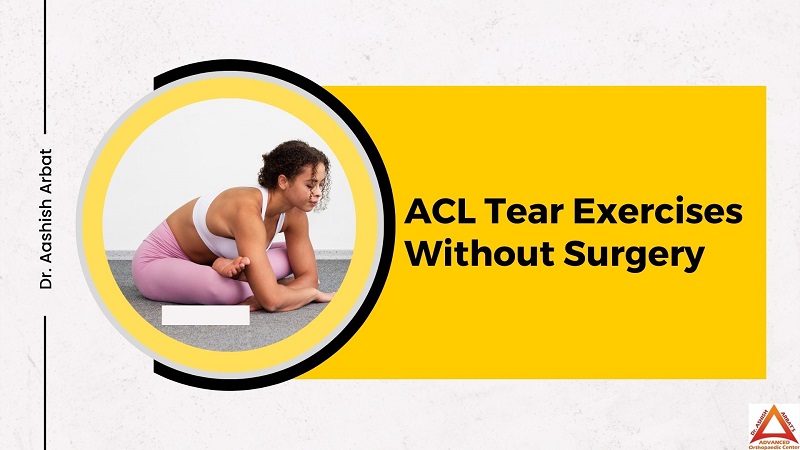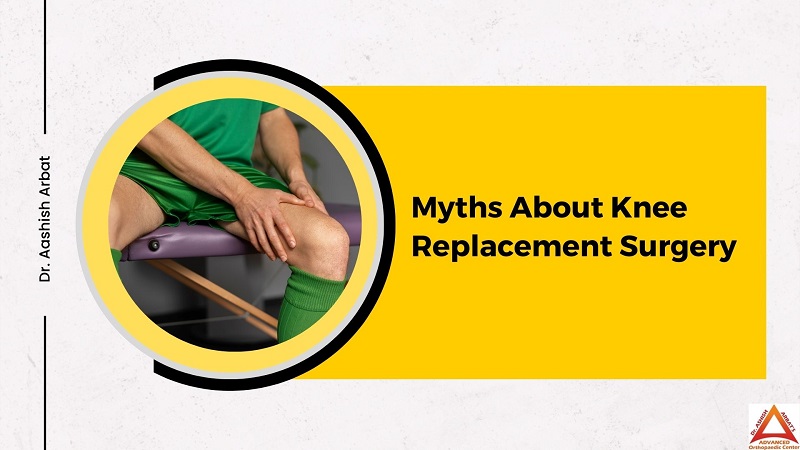ACL Tear Exercises Without Surgery From The Best ACL Reconstruction Doctor in Pune
The Anterior Cruciate Ligament (ACL) is positioned deep within the knee and stabilizes the knee during pivoting and jumping activities. Ligaments are fibrous bands of tissue that link one bone to another bone. An ACL injury happens when an unexpected force is placed upon the ACL leading it to become overstrained or torn. This type of damage generally occurs in active individuals when partaking in sports such as football, soccer, basketball, and skiing or other recreational activities. An injury to the ACL can lead to a substantial reduction in knee stability, leg strength, and limited knee range of motion. Are you afraid of surgery? The good news is you may go for ACL tear exercises without surgery. Anterior cruciate ligament (ACL) rupture as per Dr. Aashish Arbat an acclaimed ACL Reconstruction Doctor in Pune can heal without surgery. This could even be key to better patient outcomes, as per new findings challenging the common concept that an ACL injury cannot heal. Willing to avoid high-impact activity? If you don’t have even a minor other injury in your knee, you can consider ignoring surgery. However, to enjoy a normal life without surgery, you need to practice a few ACL tear exercises. ACL Tear Exercises Without Surgery ACL tear exercises without surgery include: Progress isometric strengthening program Knee extension 90 to 40 degrees Leg Press Hamstring curls Hip Flexion and Extension Lateral Step-Overs Lateral Lunges Hip Abduction and Adduction Strengthening the anterior cruciate ligament (ACL) is vital for injury prevention, joint stability, and improved mobility. There are exercises to strengthen your ACL. ACL Strengthening Exercises Dr. Aashish Arbat, the best ACL Surgeon in Pune divides this piece into sections depending on where you are in your recovery process and what you need to work on. It is imperative to note that the exercises mentioned below in this rehabilitation program are designed for only an ACL reconstruction surgery. If you also had a meniscus slit you may have range of motion and weight bearing limitations. These are like no-weight bearing for 6 weeks. Besides you should avoid knee flexion past 90 degrees for the first week. In this case it is highly recommended to follow the protocol outlined for you by your surgeon. Post Op: Weeks 1-2 Ankle pumps Heel slides Quad sets Straight leg raise in 4 directions Bridge Weight Shifting Pillow squeeze Weeks 3-6 Mini Squat Step Ups Bridge With Hamstring Curl on Physioball Week 7-8 Leg Press Chair Squat Monster Walks With Resisted Band Weeks 9-12 In this phase, you can start executing plyometrics submax specific training two legged and single legged jumps Start with very small movements and stand near a supportive surface 3-5 months This stage is the coming back to running phase. The exercises at his point will focus on agility and multiplane sport-specific plyometrics The objective of this phase is to aim the exercises at whichever sport you are trying to return to. 6-9 Months This phase is the return to sport phase If you are looking to know the long-term effects of ACL tear without surgery; read on. Long-term Effects of ACL Tear Without Surgery Knee instability, which can cause the leg to give way Reduced activities, as the knee is unlikely to support aggressive landing, cutting and pivoting Osteoarthritis effect, which can lead to cartilage degeneration in the shinbone and kneecap Further knee injuries and surgeries Insistent pain Weakened long-term quality of life Grade 3 ACL Tear No Surgery Immobilization or bracing Physical therapy Gradual progression back to regular activities and sports Some damaged ACLs may heal after exercise-based rehabilitation, with better patient-reported outcomes compared to surgery Surgical repair is likely but not always necessary Recovery time varies, even some individuals may not completely recover without surgery If total ACL tear treatment is possible without surgery depends on individual cases. Complete ACL Tear Treatment Without Surgery Consulting with the best ACL Surgeon in Pune is essential to determine if complete ACL tear treatment without surgery is possible based on your specific situation. It is important to keep in mind that though exercises work but there are a few exercises which you should avoid in case of a torn ACL. Torn ACL Exercises to Avoid Heavyweight knee extension Sudden acceleration, deceleration, or change of direction Pivoting or rotating the knee Heel raises Running and impact exercises TKE (Terminal Knee Extension) exercises Leg balancing exercises until swelling has subsided The recovery time to heal with ACL tear exercises without surgery will vary for everyone. Accordingly, listen to your body and to your Orthopedic Doctor and physical therapist. ACL Tear Without Surgery Recovery Time ACL Tear Without Surgery generally takes six to nine months to recover. If you are a competitive athlete, you may need a little longer time than this to heal completely before they’re cleared to return to their sport. Don’t rush to return to playing sports or working out till your surgeon suggests. If you restart activities before your ACL heals, you’re more likely to re-injure it. Conclusion Now that you have learned about ACL tear exercises without surgery, discuss your objectives with an ACL Surgeon in Pune. Accordingly, make the choice that the professional suggests for you. Get in touch with the best Orthopedic Doctor in Pune and enjoy a normal life even without surgery. The ACL strengthening exercises will improve your knee strength, and mobility and help you get back to the activities that you love! Most importantly these exercises will prevent you from re-tearing your ACL again.









